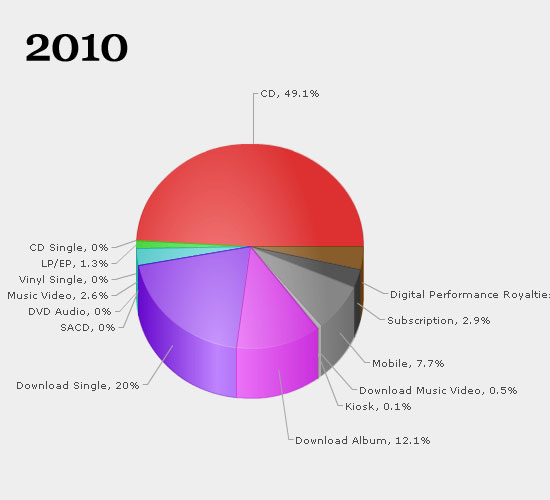Back in the days of yore—or 2017—the music industry revenues, according to investment firm Goldman Sachs—were pie-sliced like this:
- $26 billion live
- $30 billion recorded
- $6 billion publishing (which it defines as “Revenue collected by music publishing companies, which act as agents for songwriters and composers, collecting and distributing royalties on their behalf.” So when you read about musicians selling their catalogs, it means that those royalties no longer are funneled their way, and the big organizations that consequently own those rights probably invest via firms like, well, Goldman Sachs.)
The people at Goldman Sachs are seemingly bullish on the sorts of returns that can be garnered in the years to come, as this it what they project for 2030:
- $38 billion live
- $80 billion recorded
- $12.5 billion publishing
As you can see, the increase in live performance is the least gain, 46%. Of course, these reckonings were made prior to Taylor Swift’s tour. Publishing is a 108% increase. And recorded music rises 167%. Of course, “recorded music” doesn’t mean just physical media. Clearly, that’s merely a fraction of the total take, which is clearly dominated by streaming, which, Goldman Sachs says has grown 2.5 times since 2017, from 950 billion on-demand streams to 3,359 billion streams.
But those involved in this space aren’t necessarily busting out the champagne because (1) the revenue per steam is down 20% over this period and (2) the average revenue per user is down 40%.
But these billions of dollars certainly aren’t chump change.



